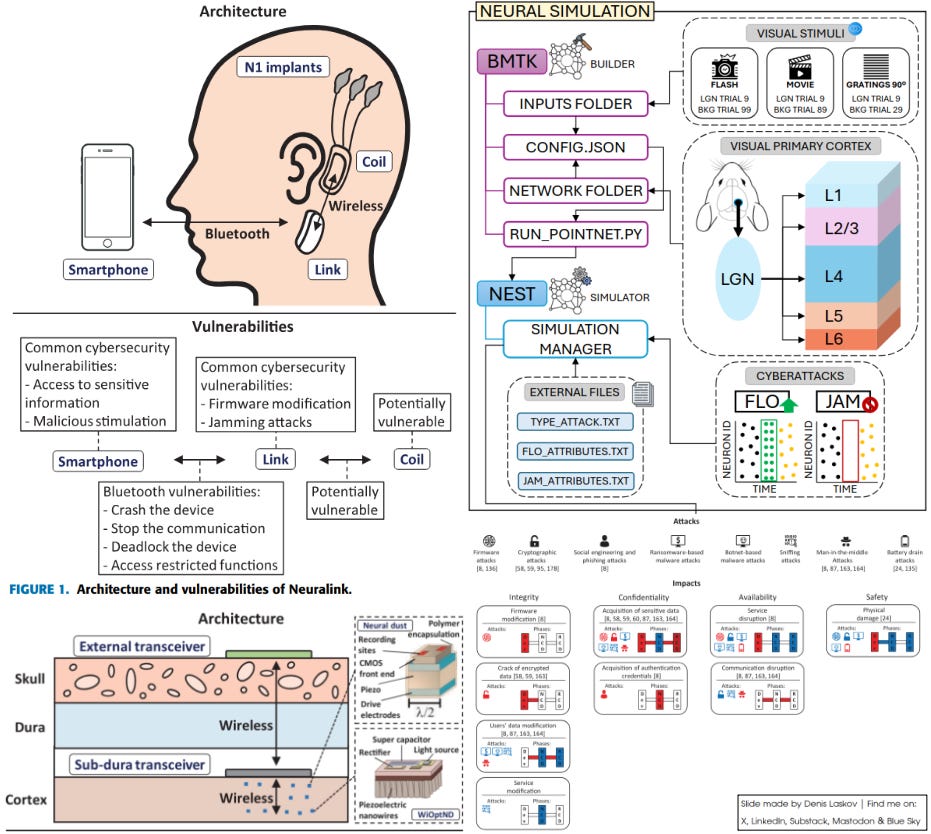Cybersecurity attacks on brain implants: theoretical in 2020, practical PoC in 2025. 👨🏻💻🧠🎯😈👁️
An international group of academic researchers led by Sergio López Bernal has, for at least the last six years, published research on vulnerabilities and cyberattacks from Brain-Computer Interfaces (BCIs) to the brain (assuming the device is already compromised).
If back in 2020 most of the assumptions were theoretical, in 2025 the authors released a PoC that ran against a virtual simulation explicitly based on the anatomy and physiology of the mouse, with about 230,000 neurons.
Types of attacks tested:
1️⃣ Neuronal Flooding (FLO) - Forces targeted neurons to communicate by raising their membrane voltage.
2️⃣ Neuronal Jamming (JAM) - Forces targeted neurons to their reset potential to suppress their ability to communicate.
Both attacks affected the brain’s ability to see and process visual information, with some effects lasting longer than others.
Well, this is the future we’re going to live in, huh… Let’s at least make those BCIs secure by design.
P.S. No mouse was harmed during the PoC.
More details:
Cyberattacks on Miniature Brain Implants to Disrupt Spontaneous Neural Signaling [PDF, 2020]: https://trepo.tuni.fi/bitstream/handle/10024/216936/09169881_Cyberattacks_on_Miniature_Brain_Implants.pdf?sequence=-1
Security in Brain-Computer Interfaces: State-of-the-Art, Opportunities, and Future Challenges [PDF, 2020]: https://2024.sci-hub.se/8638/0f143e90584e8de4298e93697aefddd4/bernal2021.pdf
Neural cyberattacks applied to the vision under realistic visual stimuli [PDF, 2025]: https://arxiv.org/abs/2503.08284


